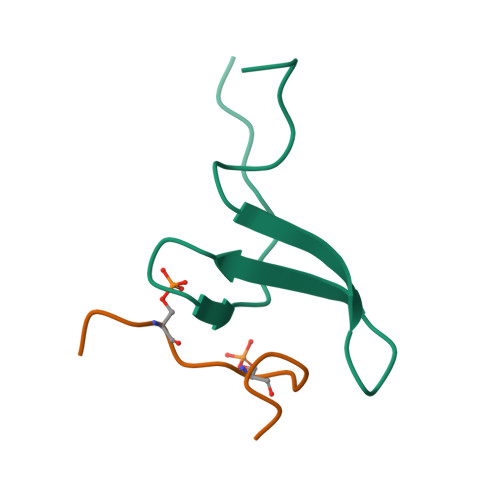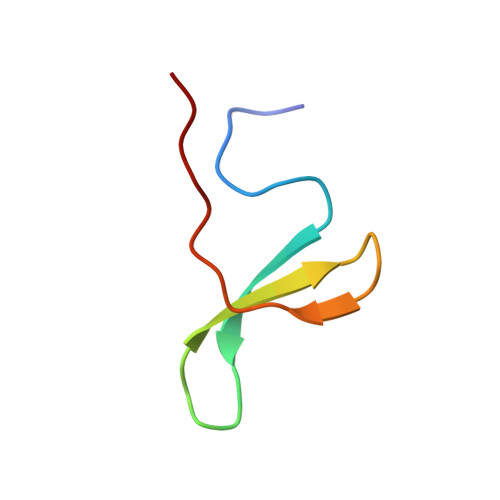Structural Studies of the Nedd4 WW Domains and Their Selectivity for the Connexin43 (Cx43) Carboxyl Terminus.
Spagnol, G., Kieken, F., Kopanic, J.L., Li, H., Zach, S., Stauch, K.L., Grosely, R., Sorgen, P.L.(2016) J Biological Chem 291: 7637-7650
- PubMed: 26841867
- DOI: https://doi.org/10.1074/jbc.M115.701417
- Primary Citation of Related Structures:
2N8S, 2N8T, 2N8U - PubMed Abstract:
Neuronal precursor cell-expressed developmentally down-regulated 4 (Nedd4) was the first ubiquitin protein ligase identified to interact with connexin43 (Cx43), and its suppressed expression results in accumulation of gap junction plaques at the plasma membrane. Nedd4-mediated ubiquitination of Cx43 is required to recruit Eps15 and target Cx43 to the endocytic pathway. Although the Cx43 residues that undergo ubiquitination are still unknown, in this study we address other unresolved questions pertaining to the molecular mechanisms mediating the direct interaction between Nedd4 (WW1-3 domains) and Cx43 (carboxyl terminus (CT)). All three WW domains display a similar three antiparallel β-strand structure and interact with the same Cx43CT(283)PPXY(286)sequence. Although Tyr(286)is essential for the interaction, MAPK phosphorylation of the preceding serine residues (Ser(P)(279)and Ser(P)(282)) increases the binding affinity by 2-fold for the WW domains (WW2 > WW3 ≫ WW1). The structure of the WW2·Cx43CT(276-289)(Ser(P)(279), Ser(P)(282)) complex reveals that coordination of Ser(P)(282)with the end of β-strand 3 enables Ser(P)(279)to interact with the back face of β-strand 3 (Tyr(286)is on the front face) and loop 2, forming a horseshoe-shaped arrangement. The close sequence identity of WW2 with WW1 and WW3 residues that interact with the Cx43CT PPXY motif and Ser(P)(279)/Ser(P)(282)strongly suggests that the significantly lower binding affinity of WW1 is the result of a more rigid structure. This study presents the first structure illustrating how phosphorylation of the Cx43CT domain helps mediate the interaction with a molecular partner involved in gap junction regulation.
Organizational Affiliation:
From the University of Nebraska Medical Center, Omaha, Nebraska 68105.


















